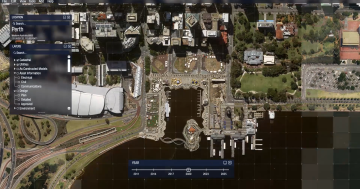Charlie Meyer* says Governments have been forced to change the way they operate during COVID-19 — and those changes will not end with the pandemic.
 The pandemic has accelerated digital transformation in virtually every corner of society, from the local pizza shop to the biggest Government offices.
The pandemic has accelerated digital transformation in virtually every corner of society, from the local pizza shop to the biggest Government offices.
People are now working, shopping and even learning online.
While these habits began out of necessity, with social distancing restrictions forcing new ways for accomplishing everyday tasks, it wasn’t long before the benefits of a digital-first approach became apparent.
Not only were traditional customer annoyances like long lines and wait times suddenly a thing of the past, but the digital interactions meant that service providers could gain new insights about their customers.
For Government offices that have always faced demanding service expectations, the forced innovation and digital transformation sparked by pandemic protocols are driving a revolution in operational efficiency.
It is the dawning of a new age in big data and customer metrics, driven by technologies that enable new operational efficiencies for Public Service administrators across the Government.
Government offices, like any large organisation, aren’t known for their ability to change on a dime.
This makes the relatively rapid digital transformation achieved during the pandemic even more impressive.
Yet that change will mean nothing if Government doesn’t capitalise on it to improve delivery of services.
Here’s how Agencies can make the most of technology and fully embrace the new era of digital service delivery.
Audit the existing system
Agencies can’t plan where they’re going until they know where they are, which is why any major process initiative must begin with a thorough audit of existing systems.
How is information processed? Where are the services bottlenecks? What data is available, and what data should be accessible?
These are just a few of the questions that should guide the auditing process.
Understanding current systems will also help Agencies build the case for future changes.
It’s much easier to convince a manager that an additional service or expense is justified when the problems and inefficiencies in the current approach can be easily understood.
Consider the human element, not just the technology
Changes should not just be about improving or advancing technology, but about improving the user experience.
One area to consider is how long customers spend waiting in line for service.
This doesn’t just affect the Agency’s throughput; every minute someone spends waiting is a minute they could be doing something else.
In other words, reducing wait times improves customer experience — and that is often paid back in the form of good reviews.
The pandemic saw virtual appointment scheduling software grow dramatically in popularity, and with good reason.
This software allows customers to schedule appointments, receive reminders about their appointments and even hold their place in line virtually.
It changes the entire experience of waiting in line, reducing crowds and helping everything move smoothly.
Not only that, but it gathers important data about customers and Agency efficiency.
It’s easy to see when the most crowded times are, identify patterns that will help move more customers through more efficiently and implement data-driven decisions to help process more customers in less time.
Treat change as a process, not an outcome
The changes Governments made in 2020 may have felt major, and in many cases, they really were.
However, it is important Agencies think of change as an ongoing process.
Maybe social distancing restrictions forced a change to a virtual appointment system but that’s not the end of the journey — in many ways it’s just the beginning.
Systemic change and process improvement are never over.
As new technology appears and new challenges need to be solved, Governments must continue to evolve.
After all, one of the biggest problems Government offices face is systemic stagnation.
Unlike corporations, which are forced to adapt and evolve in order to stay ahead of the competition, Government offices tend to embrace the familiar; processes happen one way because they’ve always happened that way.
Changing systems starts with changing this attitude.
After getting used to the comforts and conveniences of virtual appointments and a world without waiting lines, customers will expect the level of service to remain as high as it has been during the pandemic.
That doesn’t mean more changes are on the way; it means the changes already made will continue to evolve to meet the new challenges.
The future is already here, and citizens will appreciate just how willing and able Governments are to accommodate it.
*Charlie Meyer is Senior Vice President of Sales at the QLess software company based in California.
This article first appeared on the website of GCN, which provides ICT solutions for the public sector.











